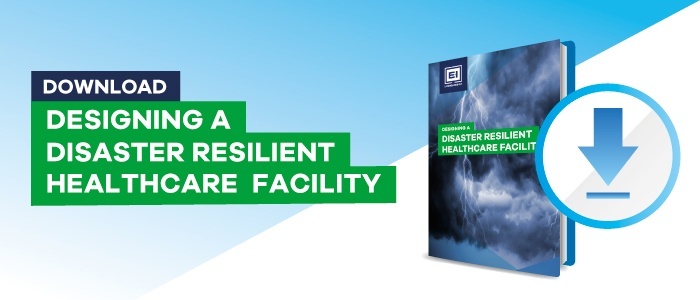Qualified professionals in charge of the construction and operation of healthcare facilities hold a huge responsibility to patients, employees and visitors to ensure their wellbeing and safety. Among other considerations, continuous and reliable energy supply, climate control and hygienic conditions for operating rooms must be upheld around the clock. On top of this, they are expected to reduce energy usage, lower CO₂ emissions and curtail costs.
Money spent on inefficient energy costs utilizes resources that could be better invested elsewhere, such as improvements to infrastructure, expansion or patient focused projects. Focusing on energy efficiency from the project outset can reduce operating costs throughout the building lifecycle, enabling facilities to invest these savings into cutting edge equipment. However, implementing an energy optimization procedure does require professional services and specific technology.
The Challenge
The healthcare industry is currently facing a major challenge. While medical facilities, equipment and services are being improved to provide patients with the highest level of care, the increased costs associated with operation have placed huge financial pressures on both public and private investors, subsequently affecting health insurance premiums. Furthermore, financial pressures have been enhanced with the responsibility to increase energy efficiency. So, while facilities strive to improve energy usage, they’re faced with the dilemma of also ensuring patient comfort and a continuous, reliable energy supply, even in the case of an emergency.
The global climate change issue along with the goal to lower greenhouse emissions requires innovative solutions for energy optimization. To support this ambition, the European Union (EU) has set the objective to lower building energy consumption by 27 percent by the year 2020 (Siemens Reports). New technology and the implementation of energy conservation will play an undeniable role in this, as will further monitoring practices.
Energy efficiency in new buildings
Prior to the development of new building projects, an energy management plan including costs, benefits and guidelines should be implemented. The cost of system acquisition, operation and maintenance should be incorporated as part of the lifecycle costs. In this respect, investment calculations must be made in consideration of the system‘s serviceable life, including developments in the energy sector and the environmental friendliness of the materials used.
Energy Efficiency In Existing Buildings
Achieving energy efficiency in existing buildings requires energy optimization processes to be applied within the healthcare facility. For example, all German hospitals have an energy optimization cost saving potential of just under 232 million euros (Siemens). Optimization procedures require facilities to undergo continuous monitoring, analysis and management and energy efficiency savings will only be achieved through a sustained long term plan.
Energy optimization:
Energy optimization is usually modified to suit the size and scope of each healthcare facility’s requirements. The steps taken towards improving energy usage will be based on the data obtained from monitoring and analysis.
Energy Monitoring
The first step in energy optimization requires measurement of current energy use to get an understanding of a facilities consumption levels. The information obtained here also provides management with an insight to the costs and emissions, enabling better informed decision making towards achieving energy optimization and greater profitability for the facility.
Energy Analysis
Energy savings have to be developed and monitored on an ongoing basis. In depth knowledge and informed experience are essential to be able to analyze a hospital‘s energy results in a way which enables management to compare and benchmark results, which can then be used to refine and optimize energy use.
Energy management system for healthcare:
Energy management systems allow facility managers to access real-time energy usage so that improvements can be made if necessary. As one of the biggest benefits of energy management systems; accurate measurement enables data to be collected from electrical meters and analyzed to assess the entire facilities energy usage. This is easily presentable on the management system’s dashboard where information can be segmented and viewed based on factors such as day, time, or hospital department.
Energy Management Systems are a cost-effective and straightforward option to restrict energy consumption. Incorporating an EMS will not only remove the need for an expensive and laborious retrofit but it will highlight the areas where abnormalities occur. A dedicated EMS is also essential in any installation that is required to comply with any government energy regulations.
Energy management system benefits include:
- Alarms/notifications can be configured to notify the user of any system issues that have arisen so that consumption can be reduced.
- System status reports can be generated using predefined report templates or client specific custom reports.
- Power and energy information can be accurately obtained from key distraction points.
- Management can make timely, intelligent decisions based on the information gathered.
As the world’s population grows and technology further develops, it’s inevitable that energy demands and costs will grow alongside it. By taking a proactive approach to energy management now, healthcare facilities will successfully achieve energy efficiency and ensure financial long term security.



